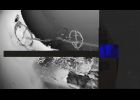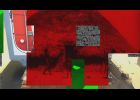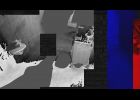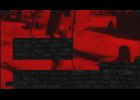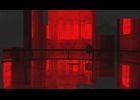Pablo-Martín Córdoba
After a first autodidact artistic experience followed by studies in Art History and Contemporary Art and Photography, Pablo-Martín Córdoba structures his work around the notions of temporality and movement. Both the latent movement in the still image and the stillness constructed from motion define a homogeneous domain where the digital image becomes a plastic material. The expansion of the spatiotemporal domain is doubled of a medial questioning which implies a free exploration of digital technologies, its possibilities and its limits. In this context, and by means of photomontages, videos and installations, the artist proposes a particular vision of reality without excluding shifts towards fiction. His work has been exhibited worldwide.
Articles of Pablo-Martín Córdoba
L’inter-code
In L’inter-code, a pseudo-random algorithm controls the appearance of zones of images and zones of text in mutual exclusion over the screen. The images include animations based on 3D models of objects exhibited in the Musée des Arts et Métiers in Paris: astronomical instruments which measure the infinitely big, a cyclotron which probes the subatomic world and above all, photo cameras adapted to the measure of space (photogrammetry). The images also include footages taken by the German ethnologist Theodor Koch-Grünberg in 1911 while living with the Taulipang tribe in Brazilian Guyana. The texts where extracted from the work of the philosopher Vilém Flusser, Towards a Philosophy of photography, which inspired this work. Strengthened by the soundtrack, this animation opposes Images and Texts in line with the ideas of Vilém Flusser: texts and images confront one another in the representation of the real world. This dialectical relationship, whose synthesis is yet to be discovered, is matched in the video by another opposition: tribal men living in equilibrium with nature, contrasting with the divergences of technical progress. By representing the biased relationship mankind maintains with the real when it is coded by texts and by images, L’inter-code seeks to question photographic image, not as the neutral product of a technique but as a complex construction that embeds a risk: the danger of increasing the distance between mankind and the world he inhabits. L’inter-code questions the possibilities and limits of science and its materialization in technology.
